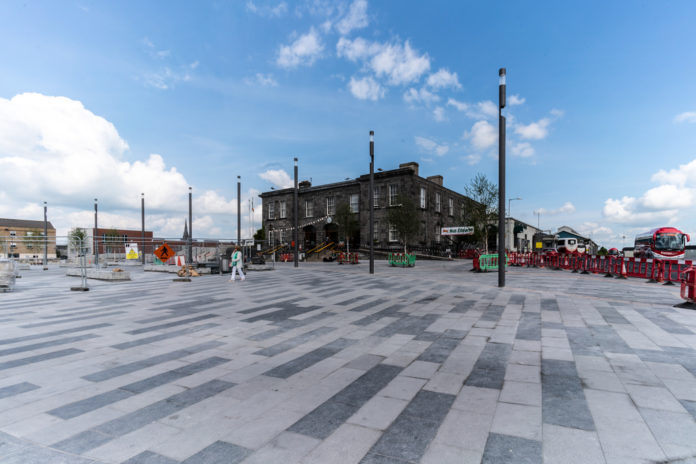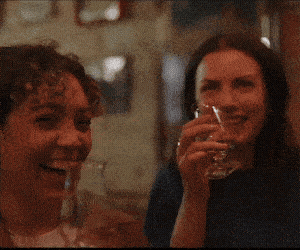
Limerick suffers as litter survey reveals fewer ‘clean’ towns
- PPE litter prominent across country
- 60% of heavily littered sites from last year have not been addressed
- Civic responsibility needed at a time of stretched resources
The first nationwide litter survey by business group Irish Business Against Litter (IBAL) since the Covid-19 crisis shows Limerick City losing its ‘clean’ status in the ranking of 40 areas across the country.
Meanwhile, Galvone fell back to ‘seriously littered’ at the foot of the table. There was a dramatic fall in the number of clean towns and cities, to its lowest level since 2007. Kilkenny was again judged best of the surveyed, with ‘seriously littered’ Dublin North Inner City at the foot of the table. The survey showed PPE litter to be widespread and a rise in the prevalence of cans and glass bottles.
The Taisce report for Limerick City stated:
In common with most other cities, Limerick has slipped since last year to moderately littered. The quayside / riverside environments presented particularly well e.g. Clancy Strand, Bishops Quay and Georges Quay – they were not just good with regard to litter but overall streetscape e.g. paving, bins, bollards, planting etc.
Colbert Train Station created a very good first impression of Limerick City for any visitors arriving by train – it is a lovely, welcoming environment. Other top ranking sites included the Hunt Museum and St. John’s Castle.
The two recycle facilities / bottle banks at Honan’s Quay and Dock Road were seriously littered and presented poorly. Other examples of poor sites included the residential area of Pike Avenue / Fairview Crescent and Greenhill Road and Liddy Street (vacant area at the bus stop).
Cigarette butts were a real problem at Environs of Henry Street Multi Storey car park and Shannonbridge Roundabout. O’Connell Street was heavily littered – quite unusual for a main shopping street.
The Taisce report for Limerick City South – Galvone stated:
A very poor performance by Galvone, with just one out of the ten sites surveyed getting the top litter grade and three very poor sites – some of these were no stranger to Grade D ranking e.g. Recycle Facility at Tesco Car Park and Galvone Business Park – these areas were not just littered but subject to dumping.
The Derelict site at the entrance to Churchfield / O’Malley Park presented very poorly and has deteriorated even further over the years.
An Taisce, who carried out the survey, deemed 23 towns to be ‘clean’, a fall of over 20% on last year. The number of towns reaching the highest cleanliness level – Cleaner than European Norms – dropped by a quarter to 9, with Kilkenny edging out Athlone, Killarney and Portlaoise at the top of the rankings. While no area was branded a “litter blackspot”, North Inner City Dublin was once again seriously littered, as was Galvone.
“The rise in litter levels this year is across the board,” says IBAL’s Conor Horgan. “The Covid crisis has seen more dumping, more outdoor socialising, especially drinking, and PPE litter, but less cleaning by local authorities and less activity by volunteers like Tidy Towns – a perfect storm, in many ways, which has brought us to the worst position we’ve been in in over 10 years.”
In the fight against Covid-19, local authorities have curtailed cleaning schedules and diverted resources to other areas. At the same time, households have been generating more litter during lockdown and there has been a visible increase in drinking outdoors as pubs are closed, a fact borne out by the rise in bottles and cans found by the An Taisce inspectors, Galway City being one example.
However, there was a reduction in cigarette butts, perhaps also a reflection of pubs and offices being closed. Half of all recycle facilities surveyed were heavily littered, another likely consequence of the Covid crisis.
PPE litter was prevalent across the country, with masks 5 times as common as gloves. “Understandably, people are reluctant to pick up these items for fear of contracting Covid, so they tend to stay on the ground. We need to see a rapid rise in the use of reusable masks,” says Conor Horgan.
The number of very bad sites within towns explained the overall deterioration in cleanliness. “It is a source of particular frustration that those sites which we had identified last year as heavily littered were – for the most part – not cleaned up in the interim.”
Sites in both Limerick City and Galvone fell into this category. Of 61 sites described as either heavily littered or blackspots in 2019, fewer than 40% were clean in this latest survey. “We’ve been saying for years that the most immediate way to improve a town or city is to focus on the bad areas – clearly this is not being done.”
“In these exceptional times, when councils’ resources are stretched, civic responsibility is called for more than ever,” says Conor Horgan. “The mantra ‘we’re all in this together’ extends to the proper disposal of waste, not least waste that is prone to contamination. With fewer people available or willing to pick up litter, the message has to be ‘don’t litter in the first place.’”
2020 is the 18th year of the IBAL Anti-Litter League.


